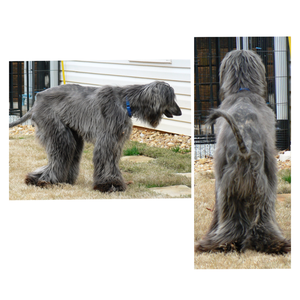The American Staffordshire terrier (or Amstaff) has an interesting history that relates closely to the bulldog – in fact, the Amstaff more closely resembles the original bulldog than does today’s version of that breed.
In the 1800s the bulldog was taller and more athletic than today’s squat, smash-faced companion breed. It was used for bear and bull-baiting, where the dog would fight those animals prior to their being slaughtered for market. As the sport of baiting fell out of favor in the 1880s, the bulldog nearly went extinct. Aficionados of the breed revived it, breeding for the extremes of character and appearance in the breed that we see today.
The Amstaff split from the bulldog before the fall of the baiting practice and the selective breeding process for extremes was undertaken. At some point, probably in the early to mid-1800s, the bulldog was crossed with a terrier of some sort, which added even more tenacity to the willful bulldog. The Amstaff began to appear in the United States as early as the 1870s, and was used in both America and England, where it originated, to fight in pits with rats, as well as other dogs. In England the bulldog/terrier ...









